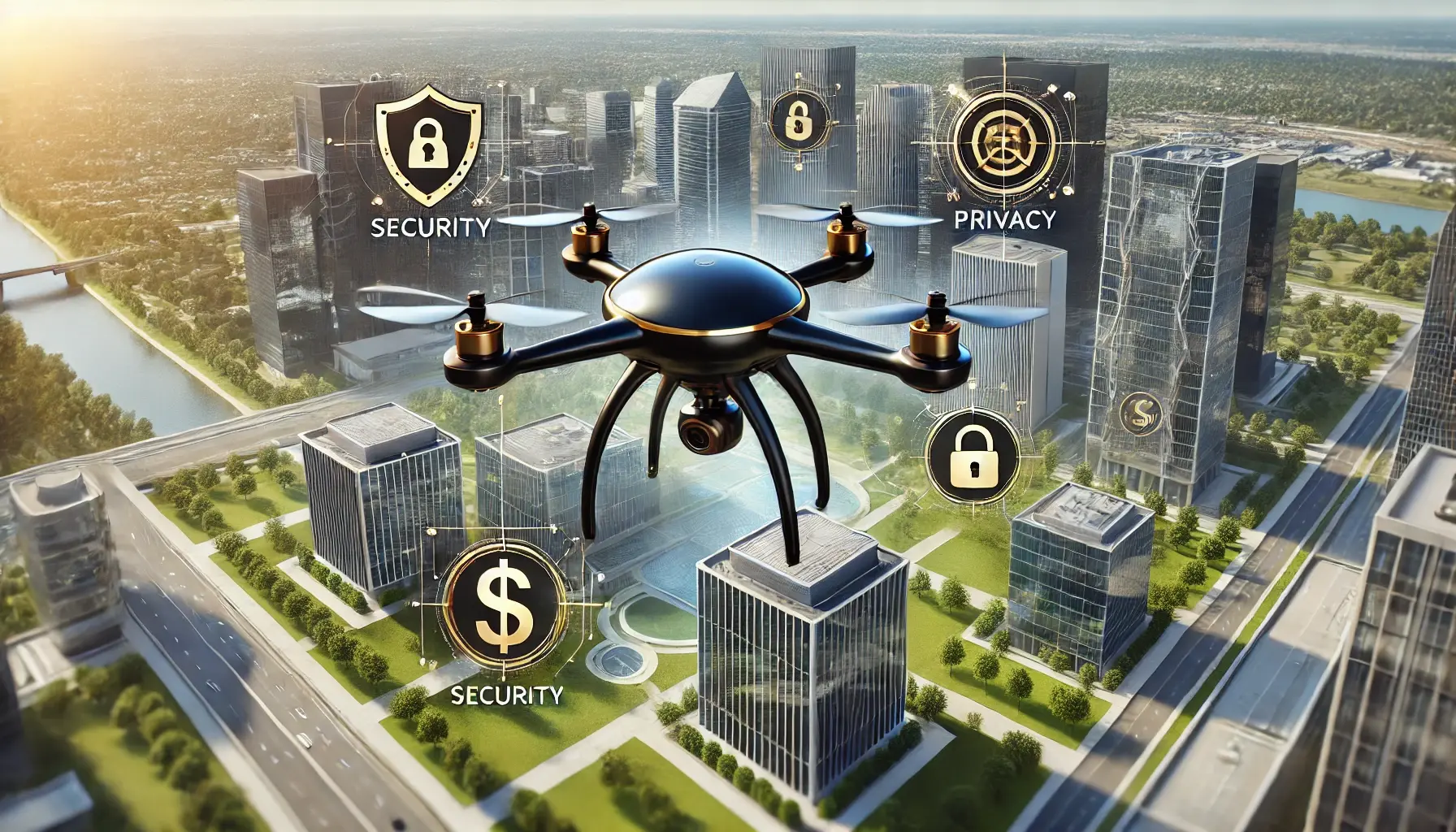As drone technology becomes an integral part of corporate campus security, many misconceptions have surfaced, often clouding the benefits these advanced tools bring. From privacy concerns to operational limitations, myths about drone security can prevent organizations from fully realizing their potential. Let’s address these misconceptions and set the record straight, offering clear insights into how drones can enhance security on corporate campuses. Need help planning out your corporate campus's aerial drone security?
1. Myth: Drones Violate Privacy
The Concern: Many people worry that drones compromise privacy by capturing unnecessary footage of employees, visitors, and neighboring areas.
The Reality: Corporate drone programs are designed with privacy compliance in mind. Reputable security providers, such as AGS Protect, adhere to strict privacy regulations and implement measures to ensure ethical usage. Drones are programmed to focus only on designated areas of interest, minimizing the risk of capturing irrelevant or intrusive footage.
How Privacy is Protected:
-
Geofencing technology restricts drones to specific zones.
-
Video encryption prevents unauthorized access to footage.
-
Data retention policies ensure video is stored only for necessary periods.
2. Myth: Drones Are Only for Large Campuses
The Concern: Smaller corporate campuses may feel that drone technology is unnecessary or too advanced for their needs.
The Reality: Drones are highly scalable, making them suitable for campuses of all sizes. Smaller campuses can benefit from drones by replacing multiple fixed cameras or on-foot patrols with a single, versatile system.
Scalability Benefits:
-
One drone can patrol areas that would otherwise require multiple guards.
-
Drones can adapt to growing security needs as a campus expands.
-
Cost savings are significant, even for small facilities.
3. Myth: Drones Are Too Expensive
The Concern: The perceived high costs of drone technology discourage organizations from considering it.
The Reality: While there is an upfront investment, drones often reduce long-term costs. They decrease the reliance on extensive ground patrols and stationary cameras, lowering staffing and maintenance expenses.
Cost Comparison Table:
| Expense Type | Traditional Security (Annual) | Drone Security (Annual) |
|---|---|---|
| Personnel Salaries | High | None |
| Infrastructure Setup | Moderate | Moderate |
| Maintenance Costs | Moderate | Low |
| Overall Cost | High | Lower |
4. Myth: Drones Are Difficult to Operate
The Concern: Some believe that drones require extensive training or a dedicated team of operators, making them impractical.
The Reality: Modern drones are equipped with user-friendly interfaces and automation capabilities. Security personnel can quickly learn how to operate them, and many tasks, such as patrols, can be fully automated.
Operational Features:
-
Pre-programmed patrol routes.
-
AI-powered anomaly detection.
-
Intuitive control systems for manual operation.
5. Myth: Drones Can’t Operate in Adverse Weather
The Concern: Drones may not function reliably in poor weather conditions, such as rain or strong winds.
The Reality: Many professional-grade drones are designed to withstand various weather conditions. While extreme weather may pose challenges, most drones can operate effectively in light rain, wind, and low temperatures.
Weather-Resistant Features:
-
Water-resistant designs.
-
Stabilized cameras for clear footage in windy conditions.
-
Advanced navigation systems to maintain control in challenging environments.
6. Myth: Drones Replace Human Security Teams
The Concern: Employees may fear that integrating drones will result in job losses for security personnel.
The Reality: Drones are not a replacement but an enhancement. They work alongside human teams to improve overall security efficiency. Drones handle routine tasks, allowing human guards to focus on critical, decision-intensive responsibilities.
Enhanced Team Roles:
-
Guards monitor drone feeds for real-time insights.
-
Security personnel respond to incidents identified by drones.
-
Human teams benefit from detailed analytics provided by drone surveillance.
The Truth About Drone Surveillance
Drones offer unmatched versatility and efficiency, debunking common misconceptions about their limitations. From enhancing privacy compliance to reducing operational costs, drones bring significant value to corporate campus security. By understanding and addressing these myths, organizations can confidently adopt drone technology and take their security measures to the next level.
Advantages of Drone Surveillance:
-
Comprehensive Coverage: Eliminate blind spots and monitor large areas effectively.
-
Cost Savings: Reduce reliance on extensive infrastructure and staffing.
-
Rapid Response: Immediate deployment to address security incidents.
-
Advanced Analytics: AI-powered insights for proactive security measures.
Frequently Asked Questions (FAQs)
Q: How do drones comply with privacy regulations? A: Drones use geofencing, encryption, and ethical programming to ensure they only capture footage relevant to security objectives, adhering to privacy laws.
Q: Are drones cost-effective for small campuses? A: Yes, drones are scalable and can provide significant cost savings even for smaller facilities by reducing the need for extensive equipment and personnel.
Q: What training is required to operate security drones? A: Most modern drones are user-friendly and require minimal training, with many tasks being fully automated.
Q: Can drones handle bad weather? A: Professional-grade drones are designed to operate in light rain, wind, and other moderate weather conditions, ensuring reliable performance.
Q: Do drones replace security personnel? A: No, drones complement human teams by handling routine tasks and providing real-time data, allowing personnel to focus on critical responsibilities.
.png)
.png)
.png)

.png)
.png)

.png)
.png)
.png)
.png)
